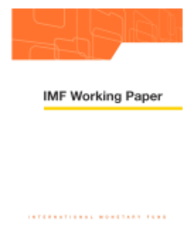
Optimal Fiscal Policy and the Environment
The paper studies the setting of optimal fiscal policy in a second-best world with environmental externalities. The optimal second-best pollution tax is shown to lie below the first-best Pigovian tax, particularly if substitution between labor and polluting intermediate inputs is easy, the labor supply curve is more elastic, and preexisting taxes are large. The optimal level of public abatement is derived from the modified Samuelson rule and is larger if society cares more for the environment, public funds are inexpensive, and public abatement is relatively productive. The analysis also shows that the Samuelson rule should be revised if allowance is made for nonseparabilities in preferences.
Publication date: September 1998
ISBN: 9781451856613
$15.00
Add to Cart by clicking price of the language and format you'd like to purchase
Available Languages and Formats
| English |
Prices in red indicate formats that are not yet available but are forthcoming.
Topics covered in this book
This title contains information about the following subjects.
Click on a subject if you would like to see other titles with the same subjects.
Economics- Macroeconomics , Economics- Macroeconomics , Environmental Conservation and Protection , Environmental Conservation and Protection , abatement , marginal cost of public funds , pollution taxation , public goods , Samuelson rule , second-best , public spending , environment , environmental quality , taxation
Summary
Copyright © 2010 - 2025
Powered by:
AIDC



